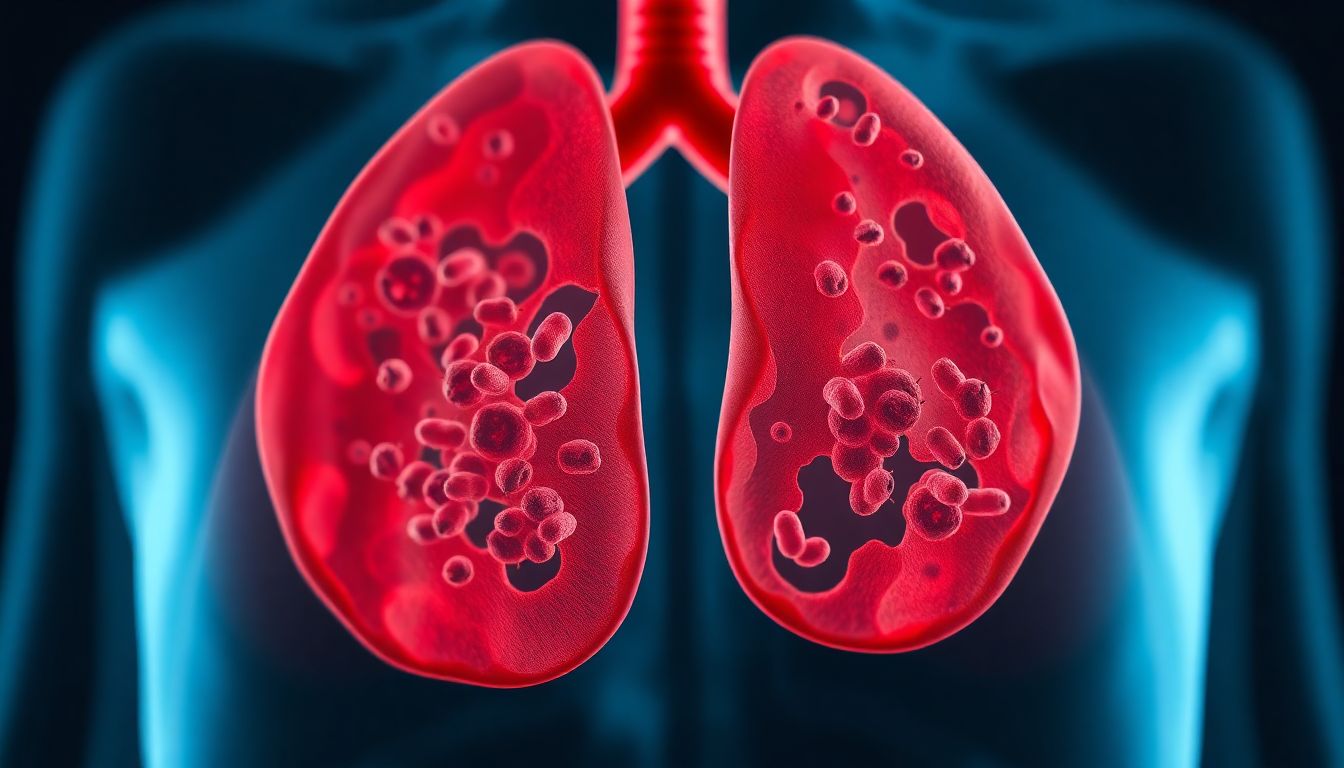That frustrating feeling of mucus stuck deep in your chest—no matter how hard you cough, it just won’t come up. You’ve tried everything: steam, herbs, breathing exercises… but the congestion remains, sitting heavy in your lungs like water at the bottom of a well.
What if the solution wasn’t about force, but about position?
There’s a technique used in hospitals worldwide that helps clear stubborn mucus when nothing else works. It’s called postural drainage, and it’s based on a simple principle: let gravity do the work.
Respiratory therapists have used this method for decades to help COPD, cystic fibrosis, and bronchiectasis patients avoid infections and breathe easier. Now, you can use these same principles at home to drain mucus that’s been trapped in your lungs for days, weeks, or even months.
Here are the simplest, most effective postural drainage positions you can start using today to finally clear that deep-seated congestion.
What is Postural Drainage and Why Does It Work So Well?
Postural drainage involves positioning your body so that gravity helps drain mucus from specific segments of your lungs toward your larger airways, where you can cough it out more easily.
Think of your lungs like a tree with multiple branches. Mucus can get stuck in the smaller, lower branches. By positioning yourself correctly, you’re essentially “tipping the tree” so the mucus flows toward the trunk where you can clear it.
The 3 Key Benefits:
- Drains stubborn mucus that coughing alone can’t reach
- Reduces infection risk by clearing bacteria-harboring mucus
- Improves breathing efficiency by opening up clogged airways
Important Safety First
- Wait 1-2 hours after eating before doing these positions
- Stop immediately if you feel dizzy, nauseated, or experience pain
- Consult your doctor if you have heart conditions, high blood pressure, or recent surgery
- Have tissues and water nearby
- Move slowly between positions
The 4 Essential Postural Drainage Positions
Position 1: Lower Lung Lobes Drainage (Lying on Your Side)
Targets: The bottom portions of your lungs where mucus often accumulates.
How to Do It:
- Lie on your side on a bed or couch
- Place 2-3 pillows under your hips so they’re elevated 15-20 inches
- Your chest should be lower than your hips
- Rest your head on your arm or a thin pillow
- Hold for 5-10 minutes, breathing deeply
- Switch sides and repeat
- Finish with several strong “huff coughs” (see technique below)
Best For: General congestion, that “heavy” feeling in your lower chest
Position 2: Middle Lung Lobes Drainage (Lying on Your Back)
Targets: The middle sections of your lungs, between your nipples and armpits.
How to Do It:
- Lie on your back on a bed or couch
- Place 2-3 pillows under your hips and lower back
- Your hips should be elevated 12-18 inches higher than your chest
- Keep your knees bent for comfort
- Hold for 5-10 minutes, taking deep breaths
- Perform gentle percussion by cupping your hand and lightly “clapping” your chest below collarbones
- Finish with huff coughing
Best For: Congestion that feels like it’s in the center of your chest
Position 3: Upper Lung Lobes Drainage (Sitting Upright)
Targets: The upper portions of your lungs, near your collarbones.
How to Do It:
- Sit upright in a chair
- Lean forward 30-45 degrees, resting your forearms on your knees
- Keep your back straight, don’t slump
- Hold for 5-10 minutes, focusing on deep breathing
- Gently pat your upper chest and shoulders with a cupped hand
- Finish with directed coughing toward the end
Best For: Morning congestion, sinus drainage, that “tickle” in your upper chest
Position 4: The “Head Down” Position (Advanced)
Targets: The very bottom of your lungs where mucus can sit for weeks.
How to Do It:
- Kneel on the floor next to a bed or couch
- Lean forward and rest your upper body on the surface
- Your head and chest should be lower than your hips
- Use pillows to support your head and arms
- Start with just 2-3 minutes and gradually increase
- Move slowly when getting up to avoid dizziness
Best For: Stubborn, long-standing mucus that hasn’t cleared with other methods
The “Huff Cough” Technique: Your Secret Weapon
Forget forceful hacking. The huff cough is what respiratory therapists actually teach:
- Take a medium breath in
- Instead of a violent cough, exhale forcefully with an “huff” sound, like you’re fogging glasses
- Keep your mouth open and throat relaxed
- Follow with 1-2 stronger coughs if needed
This technique creates less airway collapse and is more effective at moving mucus upward.
Creating Your 15-Minute Daily Routine
Morning Clearance (Before Breakfast):
- Upper Lobes (Sitting): 5 minutes
- Lower Lobes (Side-lying): 5 minutes each side
Evening Maintenance (Before Bed):
- Middle Lobes (Back-lying): 5 minutes
- Upper Lobes (Sitting): 5 minutes
When Will You See Results?
- Immediate: Many people cough up mucus within the first session
- 1-2 days: Noticeably easier breathing, reduced congestion
- 1 week: Significant improvement in morning congestion
- 2-4 weeks: Reduced frequency of respiratory infections
Enhance Your Results with Steam
Do postural drainage after a hot shower or steam inhalation. The warm moisture helps thin mucus, making it easier to drain. You can also combine it with the breathing techniques from our pursed-lip breathing guide to maximize airway opening.
The Bottom Line: Let Gravity Do the Heavy Lifting
Your body is designed to clear mucus naturally—sometimes it just needs a little positional assistance. Postural drainage takes the struggle out of congestion clearance by working with your body’s anatomy rather than against it.
Start with just one position today. You might be amazed at what finally comes up after years of feeling “stuck.” Your lungs have been waiting for this simple, natural relief.
Postural Drainage: Your Questions Answered
1. How quickly will I cough up mucus after starting?
Many people experience immediate results – coughing up mucus within the first 5-10 minutes of their first session. However, deeply embedded mucus might take 2-3 daily sessions to fully mobilize. Consistency is key.
2. Can I do this if I have mobility issues or arthritis?
Absolutely. The sitting position (Upper Lobes) is accessible for almost everyone. For the lying positions, use plenty of pillows for support and only elevate as much as comfortable. Even slight elevation can help – you don’t need extreme angles.
3. How is this different from just lying down?
Postural drainage uses specific, targeted angles to drain different lung segments. Regular lying down doesn’t create the gravitational pull needed to move mucus from the smaller airways. The precision is what makes it effective.
4. I feel dizzy in the head-down position – is this normal?
Mild dizziness can occur, especially if you’re new to inverted positions. Start with shorter times (1-2 minutes) and move slowly when changing positions. If dizziness persists, stick to the less extreme positions – they’re still very effective.
5. How often should I do postural drainage?
For chronic congestion: 1-2 times daily. During illness or flare-ups: 3-4 times daily. For maintenance: 3-4 times weekly. Listen to your body – some people benefit from brief sessions multiple times daily.
6. Can children do postural drainage?
Yes, and it’s often very effective for children. Make it a game – “let’s play the tipping game.” Use shorter times (2-3 minutes per position) and supervise closely. Always consult your pediatrician first, especially for children with respiratory conditions.
7. What if I don’t cough anything up?
This doesn’t mean it’s not working! The mucus might be: 1) Too thick (try steam first), 2) Moving slowly (be patient), or 3) Clearing without coughing (you might swallow it unconsciously). Continue for several days before assessing results.
8. Should I combine this with mucus-thinning supplements?
Yes, they work synergistically. Natural expectorants like mullein can thin mucus, making postural drainage more effective. Stay well-hydrated and consider our lung-health smoothies for additional support.
9. Can this help prevent pneumonia?
Yes, significantly. By regularly clearing mucus where bacteria can grow, you reduce infection risk. This is why postural drainage is standard care for people prone to respiratory infections. It’s preventive maintenance for your lungs.
10. When should I see a doctor instead of self-treating?
Seek immediate medical care for: fever with colored mucus, chest pain, breathing difficulty, coughing blood, or if symptoms worsen despite treatment. Postural drainage is for maintenance and mild-moderate congestion, not replacement of necessary medical care.












